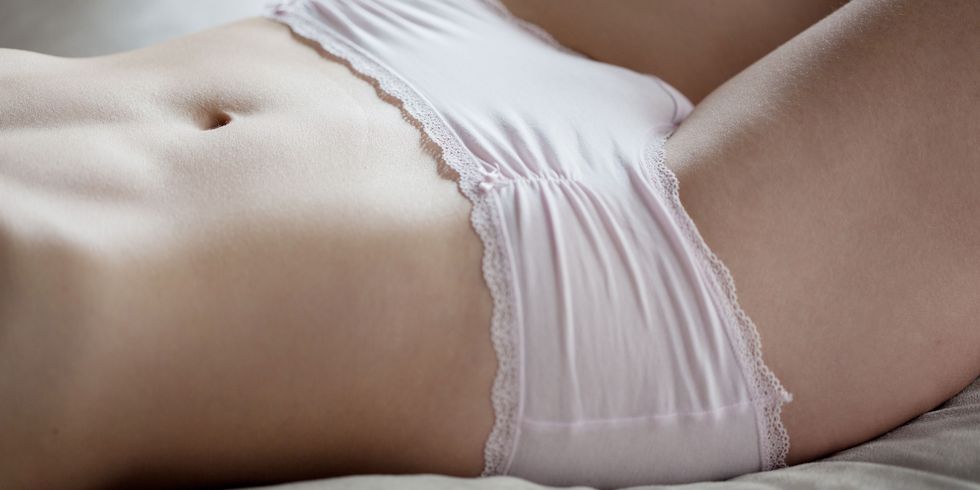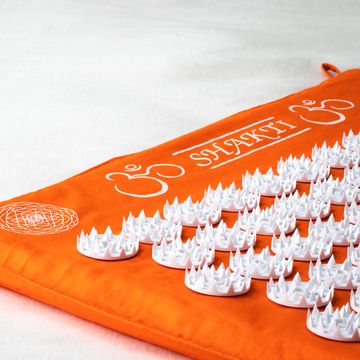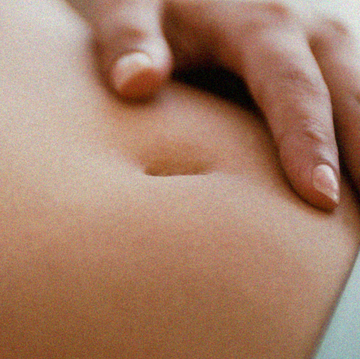Most people wouldn't know what uterus didelphys means, even though the condition is estimated to affect one in every 3,000 people women, and can have a significant impact on their lives.
Simply put, uterus didelphys means being born with two uteruses, two cervixes, and in some cases, two vaginas too.
"People are surprised when they hear the term double uterus or two cervix," says Kelly McCluskey, 24, who was diagnosed with uterus didelphys earlier this year.
"When mine was discovered, I was taken into hospital with pain, which turned out to be a bad urine infection, but during scanning they discovered an incidental ovarian cyst. I was taken for an internal scan so the doctors could decide whether or not to operate, and during this internal scan my gynaecologist suspected I had a wall going down the middle of my uterus."
"I was sent for an MRI which confirmed the septum in my uterus and I was informed I had uterus didelphys."
So why does uterus didelyphys happen, and how do you know if you’re affected?
"The uterus forms in utero by the fusion of two tubes," explains Dr Nick Raine-Fenning, spokesperson for the Royal College of Obstetricians and Gynaecologists (RCOG). "The wall between the tubes breaks down in its lower aspect leaving one womb and one cervix whilst the upper parts stay separate and form the two Fallopian tubes."
"The process can go wrong at any time, leaving two completely separate tubes and therefore two uteri and two cervixes (known as uterine didelphys or double uterus) at one extreme or one uterus separated by a muscular wall (a separate uterus)."
It’s not known exactly what causes uterus didelphys, so it’s difficult to identify any factors that might put you at a higher risk of developing the condition, but it’s thought to be more common in women who are only born with one kidney.
Uterus didelphys can also often occur without presenting any obvious signs, meaning that it’s only discovered during a pelvic exam or similar. "The only symptom I had was extremely heavy monthly menstrual periods - more than the average girl - but I had no idea they were connected until my diagnosis," says Kelly.
Some women with uterus didelphys actually have two periods per month, and require two samples to be taken during smear tests, one from each cervix - although these can be carried out during a single procedure.
Contraception is another issue for women with uterus didelphys: "Often the two uteri are of unequal size, so fitting an intrauterine device to each may not be possible," Dr Virginia Beckett, another RCOG spokesperson, reveals. "However, the contraceptive pill would work just as it would for a woman with a single uterus."
And at the other end of the spectrum, many fear that uterus didelphys could rob them of their chance to become a mother.
"This terrifies me as I've always wanted children from a young age," Kelly admits. "It may be difficult for me to become pregnant, and if I do my pregnancy will be classed as high risk, as the condition has a high rate of late miscarriage and stillbirth."
According to Dr Raine-Fenning, uterine anomalies such as uterus didelphys have been associated with infertility, miscarriage, and preterm delivery, so if you’re concerned that you may have uterus didelphys, it’s important to speak to your doctor to confirm your diagnosis and seek advice, particularly if you are hoping to conceive.
The good news is that despite the increased risk, it is possible for women with the condition to carry healthy babies to term. "Many women conceive without problems and go on to have successful pregnancies," he confirms.















